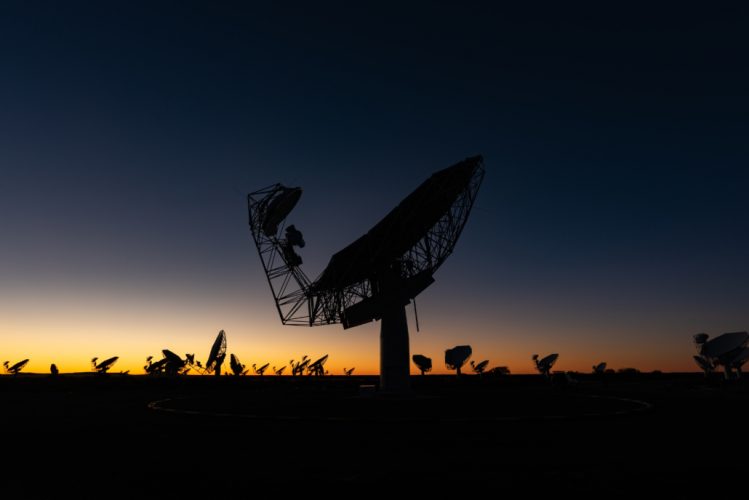Microsoft and Quantinuum achieve quantum computing milestone

Earth is blasted with gamma-ray bursts on most days. Not all of these are significant but they can produce the most powerful explosions in the universe. Picture: iStock
Subscribe to continue reading this article
and support trusted South African journalism
 SUBSCRIBE
SUBSCRIBE
Before 15 April 2020, scientists were still struggling to explain the nature of short gamma-ray bursts (GRB), having only known about their longer, two-second sidekicks.
But on this day, scientists’ ability to explain other GRBs was upped tenfold.
Before then, all that was known about these cosmic phenomenons was that they were traced to supernovas, or two neutron stars, spiralling into each other.
This may not seem relevant to anyone other than scientists enthralled with the stars, but gamma-ray bursts have more of an effect on Earth than some can fathom.
They can disrupt cellphone reception, but for scientists, these GRBs bring messages from the past, to the earliest histories of the universe.
Earth is blasted with gamma-ray bursts on most days. Not all of these are significant, but they can produce the most powerful explosions in the universe.
The GRB in question, dubbed 200415A, was discovered to have come from a rare and powerful neutron star called a magnetar.

A conceptual illustration of a magnetar neutron star with high magnetic field in a deep space. Picture for illustration: iStock
It swept past Earth and came rather close – at least, in cosmic terms. It exploded in galaxy NGC 253’s Sculptor constellation, 11.4 million light-years from us.
“That is relatively close when talking about the nuclear frying power of a giant flare GRB,” researchers said.
Out of the thousands of neutron stars, only 30 are known to be magnetars.
A neutron star is a massive star that has died and exploded into a supernova. It is as large as a 20km valley, but just a spoonful of it would weigh tons on earth, explained University of Johannesburg astro-particle physics director Professor Soebur Razzaque.

This illustration shows the three nearest magnetar giant flares (magenta circles) known. The first erupted in 1979 in the Large Magellanic Cloud, a satellite of our Milky Way galaxy located about 163,000 light-years away. The others erupted in 1998 and 2004 within our galaxy. The 2004 event produced brief, measurable changes to Earth’s ionosphere despite occurring about 28,000 light-years away. Picture: Nasa’s Goddard Space Flight Center
What’s left of these majestic stars is what causes the biggest explosions in the universe.
Razzaque led a team predicting GRB behaviour, and their research was published in Nature Astronomy in January.
Researchers struggle to find out where GRBs come from, so far only knowing that supernovas spout longer GRBs, which are bursts lasting two seconds or more.

The Crab Nebula is the remnant of a massive star in our Milky Way that died 6500 light-years away. Picture: Nasa, ESA, J. Hester and A. Loll (Arizona State University)
GRB200415A lasted 140 milliseconds, or as long as it takes someone to blink an eye. It was found careening past Mars, and was picked up by satellites, a spacecraft and the International Space station.
Nasa’s Fermi LAT telescope immediately began gathering as much data about it as possible.
Razzaque said that magnetars were up to 1000 times more magnetic than ordinary neutron stars.
And they put our sun to shame, which is rather ordinary.
When a star like our sun dies, it gets bigger and becomes a red giant star. That then collapses into a smaller star called a white dwarf.

In this illustration, a white dwarf pulls matter from a companion star. Eventually, this will cause the white dwarf to explode. Picture: STScI
“But stars that are a lot more massive than the sun play a different endgame,” Razzaque said.
Razzaque and his team were trying to understand how stars ended their life, and how GRBs were then produced. The GRB 200415A was the first time that both explosions of a giant flare were detected.
If the next giant flare GRB takes place closer to the Milky Way, Razzaque said South Africa would be able to detect it with a powerful radio telescope on the ground, such as the country’s MeerKAT telescope.

South Africa’s MeerKAT radio telescope. Picture: South African Radio Astronomy Observatory
Given their unpredictable nature, GRBs are important yet difficult to understand.
Being able to understand GRBs means going back in time, “to when the universe was a few hundred million years old”, Razzaque said.
And given their sheer mass and power, disruption is a possibility, although a relatively low one, he said.
Our communication satellites may just need better radiation shielding.
The most likely effect felt on Earth would be like in 2004, when a GRB caused satellites to pick up overwhelming noise. In theory, cellphone users would experience a brief period of static in reception.
“GRBs are the most powerful explosions in the universe. They are laboratories made in nature to study extreme processes that we cannot create on earth.”

The giant flare known as 200415A. Picture: Nasa’s Goddard Space Flight Center/Chris Smith (USRA/GESTAR)
In just 20 years, instruments have been constructed to detect GRBs in a variety of ways.
But the fascination with the unknown which exists in humans means having an urge to understand the universe we reside in.
“A star dying soon after the beginning of the universe could be disrupting cellphone reception today,” Razzaque said.

Professor Soebur Razzaque from the University of Johannesburg collaborated with a team of researchers modelling the behaviour of the first and second explosions in gamma-ray bursts. Picture: Supplied
For more news your way, download The Citizen’s app for iOS and Android.
Access to the top content, vouchers and other member only benefits